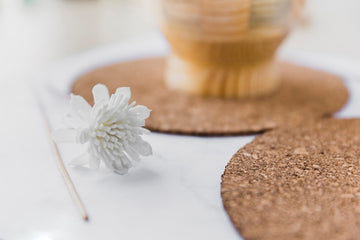It was in the 1860s that the use of coasters began, initially made of cardboard by a pair of brothers named Henschel. Similarly, there are references to the emergence of the Casalonga brand in Paris in the late 1870s, which also used cardboard in a manner very similar to contemporary coasters. During that time, they were often utilized for keeping track of consumption and sales by collecting them or making notes on them.
In the final decade of the 19th century, a new initiative emerged. The company Albert Faivreal started manufacturing coasters made of spongy material, which enhanced their ability to absorb moisture. Shortly afterward, pressed wood coasters with the name of a beer manufacturer, Robert Sputh, became popular. Subsequently, color printing was introduced in Germany.

Based on this historical background and the proliferation of coasters as an essential complement to the presentation of cold beverages in the food service industry, in all its settings and categories, they have become an inseparable practice for promoting brands, entities, companies, establishments, events, and other messages. They undeniably enhance the visibility of what is being introduced to the clientele, serving as a multiplier of interest in the message being conveyed and marketed. In fact, for higher-category Cuban tourist facilities , there is a regulation that cocktail stirrers, paper napkins, and coasters must be personalized in accordance with the corporate image guidelines of the establishment where they are used. Additionally, the infinite variety of graphic designs used in their creation has turned collecting coasters into a common practice, with some specimens considered valuable vintage pieces.
Coasters, typically round or square in shape, are usually made from absorbent materials such as paper, cardboard, plant fibers, or cork. Plastic, PVC, and linoleum coasters can also be found. Current environmental concerns necessitate the progressive elimination of single-use or disposable items. Therefore, along with straws or absorbent materials, stirrers, bags, glasses, plates, and plastic utensils, coasters must also be manufactured from biodegradable materials.
It's important not to forget their recurrent utility in social gatherings, cocktail parties, and events where participants are standing and offered cold beverages. Providing a paper napkin to hold the bottom of the glass or cup, in order to prevent discomfort from drips or moisture, is a common courtesy known colloquially as "placing a diaper" by the service staff.

Furthermore, there's another practical use for coasters: as souvenirs or mementos. People often take them and use them to jot down notes or information of interest when they don't have paper or other means available, such as names, phone numbers, and addresses. Some even use them to leave a subtle mark of affection, like a kiss mark from lipstick, making it unlikely that such a unique piece of writing will be lost.






